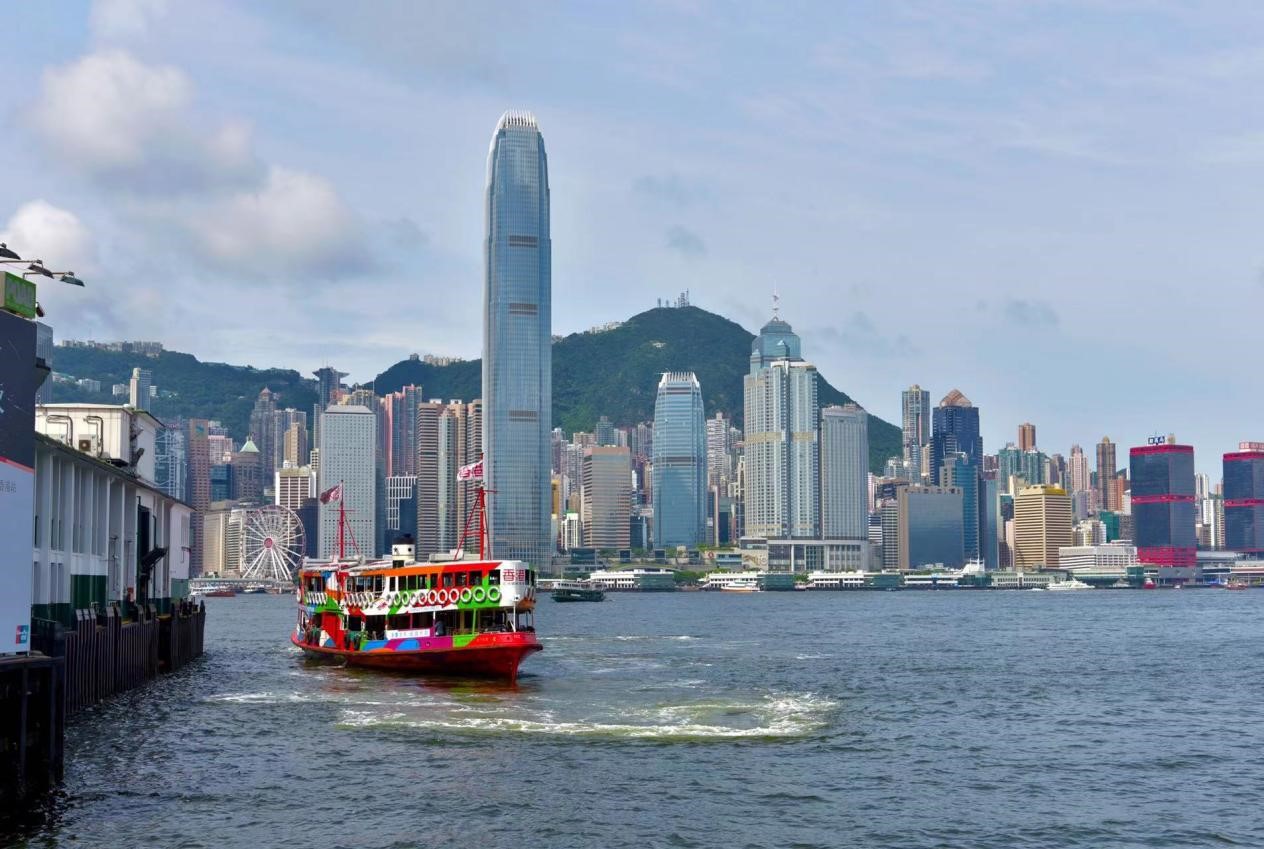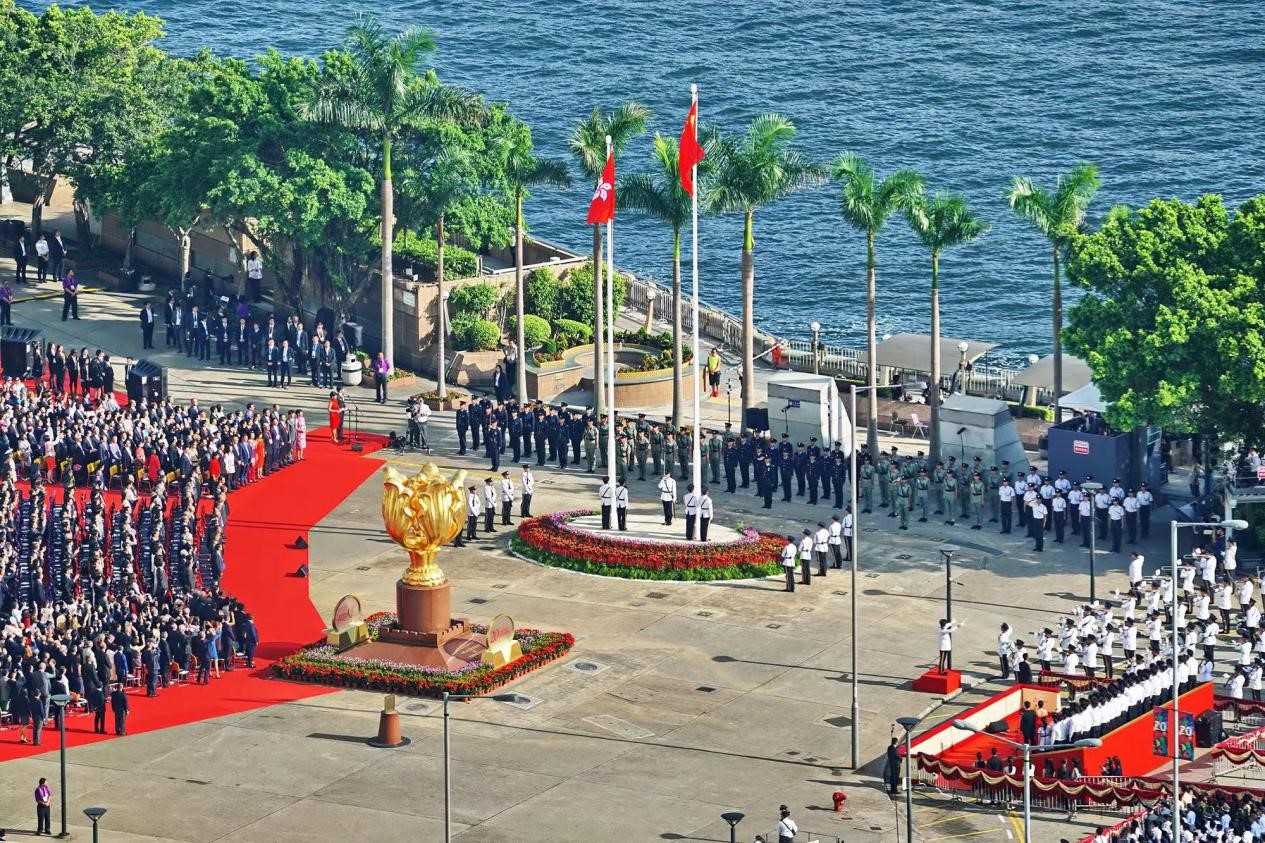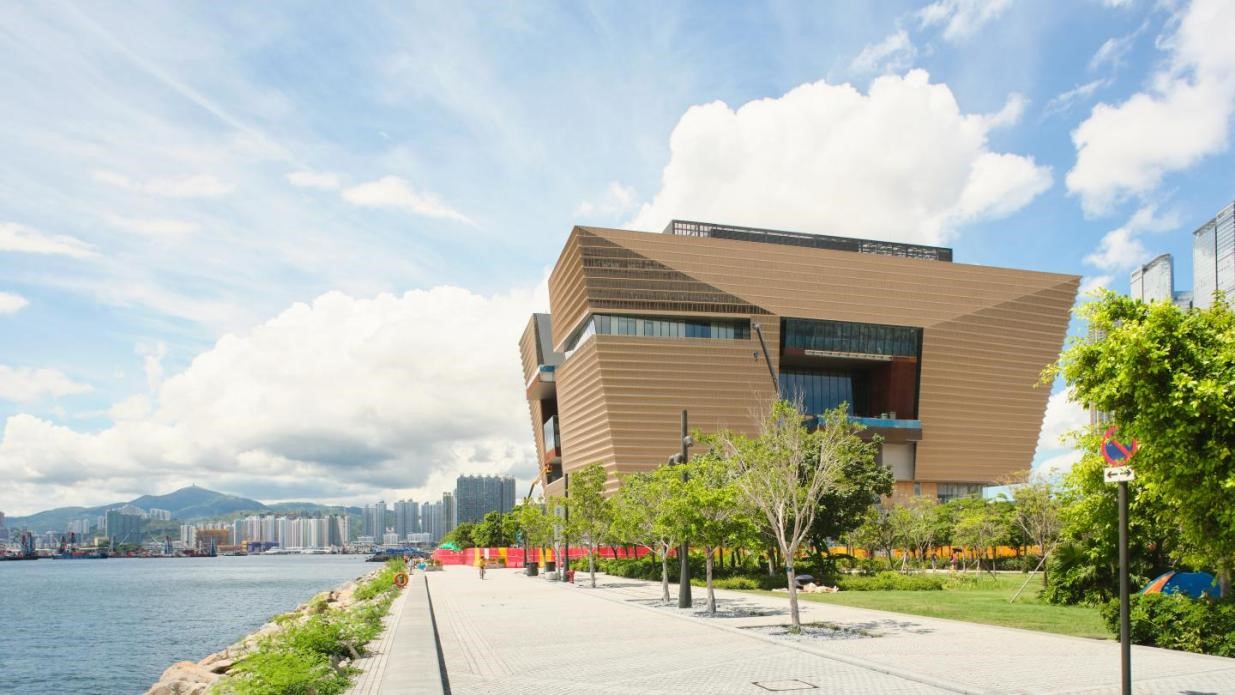“One country, two systems” principle boosts Hong Kong’s prosperity, stability
By fully leveraging its institutional strength under the “one country, two systems” principle, China’s Hong Kong Special Administrative Region (HKSAR) has steadily strengthened its competitive advantages and witnessed economic and social prosperity and stability over the past 25 years since its return to the motherland.

Photo taken on July 27, 2019 shows a ferryboat sailing from the Victoria Bay in south China’s Hong Kong Special Administrative Region to Tsim Sha Tsui, Hong Kong. (People’s Daily Online/ Duan Changzheng)
After six years of construction, the third runway at the Hong Kong International Airport is anticipated to open this year. Preparatory work for the operation of the runway, including test flights and drills, has been completed recently.
“The third runway of the Hong Kong International Airport is right across from where we are, and the new terminal is next to it. There will be a hotel and commercial complex on the side of the runway,” said Fred Lam Tin-fuk, Chief Executive Officer of the Airport Authority Hong Kong, showing People’s Daily the locations of the projects to be built at the Hong Kong International Airport on a planning map.
Besides a new runway, the three-runway system project also includes a new baggage handling system and relevant supporting transportation facilities, according to Lam, who noted that the scale of the project is almost equivalent to building a new airport next to the existing one.
Hong Kong is endowed with a good geographical location. More than half of the world’s population can be reached from the region within five hours of flight.

A flag-raising ceremony is held at the Golden Bauhinia Square in south China’s Hong Kong Special Administrative Region on July 1, 2017 to mark the 20th anniversary of Hong Kong’s return to the motherland. (People’s Daily Online/He Zhigang)
The airport plays an important supporting role in the development of Hong Kong’s economy. Data showed that the Hong Kong International Airport handled about 75 million passenger traffic in 2018, ranking among the highest in the world. The annual cargo throughput of the airport exceeded five million tonnes, topping the list of the busiest airports in the world.
Such remarkable achievements of the airport reflect the booming economy of Hong Kong since its return to the motherland.
During the past 25 years, Hong Kong has seen rapid economic development in various fields, enhancing its international status as a financial, shipping and trade center has been and consolidating its industrial advantages.
The successes Hong Kong has achieved over the past 25 years and the sound development momentum it enjoys now are both inseparable from the development of its motherland. China’s rapid development represents the greatest opportunity for Hong Kong’s economic development and the greatest strength to maintain its prosperity.
Adhering to the “one country, two systems” principle, Hong Kong has proven the advantages of its development by staying committed to the principle of “one country” and well leveraging the benefits of “two systems”.
Hong Kong’s financial system has always been robust since the region’s return to the motherland, which is attributed to the prudent policies and sound supervision of the region, and more importantly, to the region’s distinctive advantage of having the support of its motherland and being open to the world, said Eddie Yue Wai-man, chief executive of the Hong Kong Monetary Authority.
With the support of the central government, Hong Kong has become the largest offshore renminbi (RMB) business center, and its capital market has continued to grow bigger and stronger.
As of January 2022, the total outstanding amount of RMB customer deposits and certificates of deposit rose to 1.1135 trillion yuan (about $166.47 billion).
A total of 1,370 mainland enterprises had been listed in Hong Kong by April this year, accounting for 53.3 percent of the total listed companies on the Hong Kong Stock Exchange and 77.7 percent of the total value of Hong Kong stocks. The combined market value of these enterprises has reached 37.6 trillion Hong Kong dollars (about $4.79 trillion).

Photo shows the third runway of the Hong Kong International Airport under construction. The paving of the runway was completed in June 2021. (Photo/Official website of Hong Kong International Airport)
“The principle of ‘one country, two systems’ has created unique advantages for Hong Kong’s business environment,” said Jimmy Chiang, associate director-general of Investment Promotion at InvestHK.
The Basic Law of the HKSAR has helped Hong Kong grow into one of the world’s freest economies while maintaining a simple tax system with low tax rates, which is particularly attractive to enterprises, he noted.
By the end of 2021, the number of both mainland and foreign enterprises that had set up offices in Hong Kong reached a record high of 9,049, among which 1,457 located their regional headquarters in Hong Kong.
“Last year we helped a total of 333 companies establish or expand businesses in Hong Kong, and 186 of them chose to invest in the region because of the thriving Guangdong-Hong Kong-Macao Greater Bay Area,” said Chiang.

Photo shows the exterior of Hong Kong Palace Museum in West Kowloon Cultural District, south China’s Hong Kong Special Administrative Region. The museum will open to the public on July 2, 2022. (Photo/Official website of Hong Kong Palace Museum)
Hong Kong can help companies from the Chinese mainland explore the global market by providing them with legal and financing services, Chiang explained, while Hong Kong can attract international investment institutions and firms and enable them to fully leverage the resources in the Greater Bay Area to achieve better development in Asian and even the global market.
In recent years, Hong Kong has made continuous efforts to promote the growth of offshore RMB market, develop itself into a regional intellectual property trading center and enhance its capability to provide international legal and dispute resolution services for investors.
The outline of China’s 14th Five-Year Plan (2021-2025) for national socio-economic development has charted the route to a bright future for Hong Kong. As the construction of the Greater Bay Area makes steady progress and breakthroughs, Hong Kong is embracing brand new opportunities.
Photos
Related Stories
- Hong Kong will continue to prosper: Nepali official
- Night view of Hong Kong
- Hong Kong to distribute 220,000 RAT kits following sewage COVID-19 detection
- Proud to be contributing to better future of Hong Kong -- stories of three youths born in 1997
- Hong Kong Palace Museum holds opening ceremony
- Feature: Twin-city cooperation offers business launchpad for Hong Kong youths
- Aerial view of major constructions in Hong Kong
- Feature: Story of Hong Kong films' integration into nat'l development
- Hong Kong's future very promising: Chief Executive Carrie Lam
- Incoming HK chief says team united, loyal
Copyright © 2022 People's Daily Online. All Rights Reserved.









